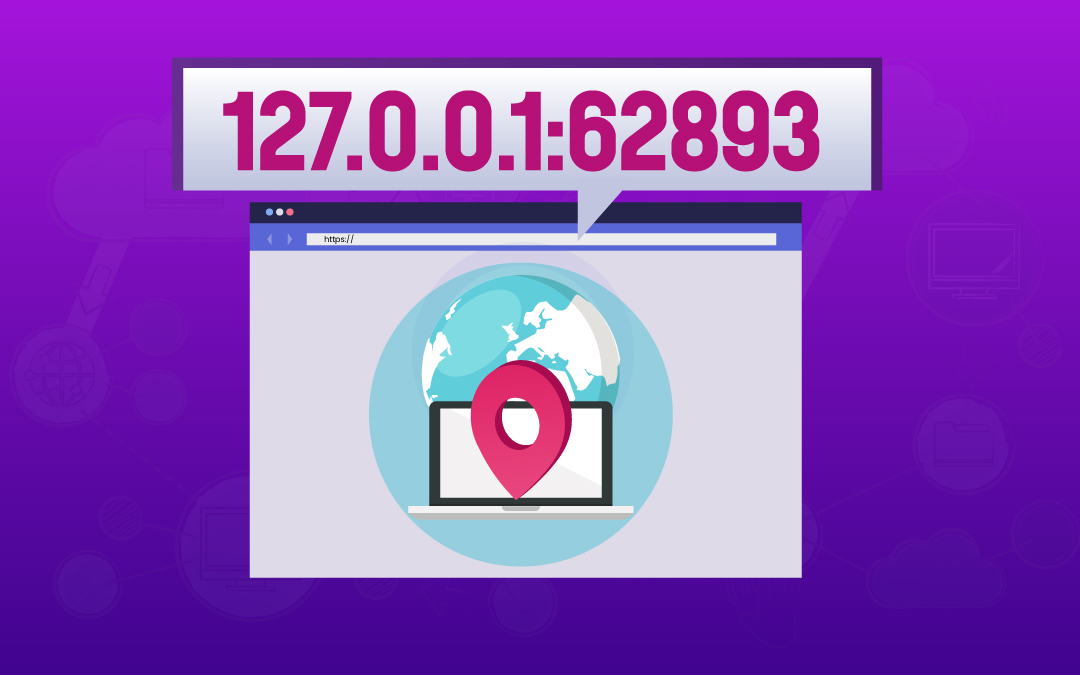Table of Contents
Have you ever encountered “127.0.0.1:62893” and wondered what it means? At first glance, this might seem like a cryptic string of numbers. However, it plays a crucial role in the world of networking and web development. In this article, we’ll break it down and make the concept easy to understand. Whether you’re a curious beginner or a developer looking for clarity, this guide will walk you through the essentials of localhost, ports, and the significance of “127.0.0.1:62893.”
What Does 127.0.0.1:62893 Mean?
At its core, “127.0.0.1:62893” refers to a local IP address and port combination used for communication within a computer system. It may look complex, but each part has a specific meaning:
- 127.0.0.1 is a standard IP address representing localhost, a loopback address that refers to your own computer.
- 62893 is a port number, a way to identify a specific communication channel within the computer.
Together, “127.0.0.1:62893” directs data traffic internally within your system on a specific port, often for testing purposes or communication between local services.
Breaking It Down: IP Addresses and Ports
To fully understand “127.0.0.1:62893,” let’s look at its two components separately.
1. 127.0.0.1: The Localhost Address
- Localhost is an alias for your computer. When a program communicates with “127.0.0.1,” it stays within the same system.
- It’s useful for testing applications or websites without going online. Developers often use localhost to test software locally before deploying it to the internet.
- The loopback address ensures quick and secure communication because the data never leaves your computer.
Think of localhost like a virtual mirror. You’re essentially sending and receiving data within the same machine, useful when you need a fast, closed environment for development or troubleshooting.
2. 62893: The Port Number
A port number is like a doorway that allows data to enter or leave a system. Computers can handle multiple connections simultaneously, so ports organize these different channels.
- The port number “62893” is arbitrary, but it falls within the dynamic or ephemeral range (ports 49152–65535). These ports are often assigned temporarily to client services.
- Whenever you connect to a website or a service, the system assigns ports like these to manage communication between your machine and the server.
- In the case of “127.0.0.1:62893,” the port number is likely being used by a local program or a development tool running on your computer.
Why Is 127.0.0.1:62893 Important?
This address-port combination appears frequently in development environments and certain troubleshooting scenarios. Let’s explore a few real-world use cases.
1. Web Development and Testing
Developers often use localhost addresses like “127.0.0.1” to build and test websites or applications. Tools such as XAMPP, WAMP, or Node.js servers are launched locally, accessible through a web browser using an address like “127.0.0.1:62893.” This setup ensures that any changes can be tested without needing to upload files to a live server.
For example:
- A backend developer working on an API can run it locally and connect to “127.0.0.1:62893” to see if the service responds correctly.
- A front-end developer can build a website and check how it behaves on different browsers by accessing the project via localhost.
This approach speeds up development since there’s no need to rely on the internet, and it ensures the code behaves as expected before going live.
2. Temporary Service Ports
Sometimes, when an application on your computer initiates a connection, it uses a temporary port like 62893. These are called ephemeral ports, automatically assigned by the operating system to handle client-server communication.
For example:
- If you’re running a database server locally (like MySQL or PostgreSQL), it might use a port in this range to manage communication between the database and a web application.
- Some development tools also bind services to high-numbered ports like 62893 for local testing. These ports are usually closed once the service or application is stopped.
3. Troubleshooting with Localhost Ports
Addresses like “127.0.0.1:62893” also come into play during network troubleshooting. If a local application isn’t working as expected, developers can use tools like netstat or lsof to see which ports are open or in use. Identifying the address-port combination helps pinpoint where the problem lies.
For example:
- If you run a web server but cannot access it on “127.0.0.1:62893,” the port may be blocked or the server may not be running properly.
- Troubleshooting might involve checking firewall settings or ensuring that the correct service is listening on the expected port.
Common Errors with 127.0.0.1:62893
While working with localhost and ports, a few common issues may arise. Here’s how to recognize and fix them.
1. Port Already in Use Error
If another service is using the same port (e.g., 62893), you might see a “port already in use” error. This happens when two applications try to bind to the same port simultaneously.
Solution:
- Use tools like
netstatorlsofto identify the conflicting service. - Stop the conflicting service or assign a different port number to your application.
2. Connection Refused Error
This error occurs when no service is listening on the specified port. If you try to access “127.0.0.1:62893” and see “Connection Refused,” it means the service isn’t running or isn’t bound to the right port.
Solution:
- Check if the application or service is running.
- Ensure your application is configured to use the correct port (62893 in this case).
- Verify that your firewall isn’t blocking the port.
3. Firewall Blocking the Port
Firewalls can block certain ports to enhance security. If “62893” is blocked, your local service won’t be accessible.
Solution:
- Open the firewall settings and allow communication on port 62893.
- Alternatively, use a different, unblocked port for your service.
Security Considerations When Using Localhost Ports
Although “127.0.0.1” is only accessible from within your computer, it’s essential to keep security in mind.
- Beware of Open Ports: Even though localhost services aren’t exposed to the public internet, malware or unauthorized software on your computer could misuse open ports.
- Close Unused Ports: Ensure that you close any services running on unnecessary ports like 62893 to reduce potential vulnerabilities.
- Monitor Local Connections: Use tools like
netstatto monitor local network traffic and identify unusual activity.
Final Thoughts
“127.0.0.1:62893” might look like a random sequence, but it’s a powerful concept in networking and development. Whether you’re working on web applications, testing APIs, or troubleshooting local services, understanding localhost and ports is crucial. The address “127.0.0.1” ensures fast, secure, and isolated communication, while ports like “62893” manage multiple channels of data.
If you encounter “127.0.0.1:62893” during development or troubleshooting, you now know that it refers to an internal service running on your machine. With this knowledge, you can confidently navigate your local environment, fix common errors, and optimize your workflow.
FAQS
1. What is 127.0.0.1?
Answer: 127.0.0.1 is the standard IP address for localhost, which refers to your own computer. It allows network applications to communicate with each other internally without going over the internet.
2. What does the port number 62893 signify?
Answer: The port number 62893 is an ephemeral port often used for temporary services or applications running on your computer. It helps to direct specific traffic to the correct service or application.
3. How can I access a service running on 127.0.0.1:62893?
Answer: You can access a service on 127.0.0.1:62893 by entering this address in your web browser or a relevant application. Ensure the service is running and listening on that port.
4. What are common uses for localhost addresses like 127.0.0.1?
Answer: Localhost addresses are commonly used for web development and testing, running local servers, and troubleshooting applications without exposing them to the internet.
5. Why might I get a “Connection Refused” error when accessing 127.0.0.1:62893?
Answer: A “Connection Refused” error typically indicates that there is no service listening on that port, or the service isn’t running. Check if the application is active and configured to use that port.
6. How can I find out what application is using port 62893?
Answer: You can use command-line tools like netstat or lsof (on Unix-based systems) to list active connections and find out which application is using port 62893.
7. Are localhost connections secure?
Answer: Localhost connections are generally secure since they are confined to your computer and not exposed to the internet. However, you should still monitor for any unauthorized access or malware.
8. Can multiple applications use the same port?
Answer: No, multiple applications cannot bind to the same port at the same time on the same IP address. If another service is using port 62893, you’ll need to stop it or change your application’s port.
9. What should I do if my firewall is blocking 127.0.0.1:62893?
Answer: You can configure your firewall settings to allow traffic on port 62893. Alternatively, you may consider using a different port that isn’t blocked by the firewall.
10. How do I change the port number for a local service?
Answer: To change the port number for a local service, you usually need to modify the service’s configuration file or settings. Look for a parameter labeled “port” and replace it with your desired port number, then restart the service.






